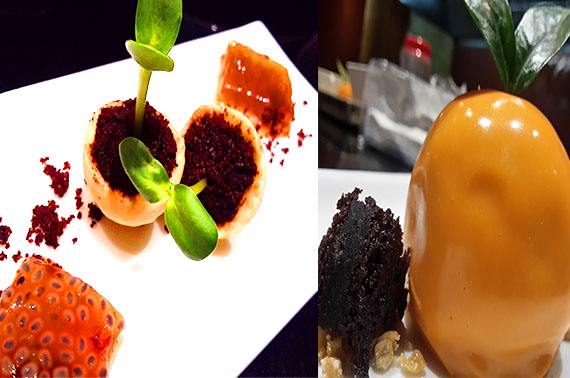CLASSIC VS CONTEMPORARY

History has a value that helps us understand the present and the future. It draws a fine line between what people of the past did and what people of the present do and also gives us a brief of what could be expected in the future. So we as the chefs of the new age drew that fine line with one thing that we are good at. Yes. FOOD.
The classic vs. contemporary menu comprised of the most renowned delicacies of the yester century from across the world, presented two ways. A menu curated to create a unique dining experience for the gourmands of Chennai. A list of renowned classics refashioned using the modern culinary artistry.
First course, in other words the first impression is a tricky task. However it didnt take much time for us to pick the right recipes, The Caesar seemed perfect to start with. Originally called the aviators salad, the classic Caesar is one of the most prominent salads in the world. With more than one story behind its origin, interestingly it is one of the most controversial salads too. In the modern kitchens Caesar salad has taken many forms, and we chose to use the technique of spherification from the molecular gastronomy to introduce our own version of this famous salad. Sprinkled with dust of crispy bacon and pearls of parmesan dressing, nitro frozen crispy lettuce elegantly positioned next to lettuce tossed with streaks of grilled bacon and Caesar dressing.
The French classic lobster bisque infused with a dash of mild espresso for soup balancing the flavor of coffee and the richness of lobster bisque. What is a better china than a pretty cappuccino cup for this brilliant infusion topped with butter enriched lobster espuma' The combination looked more than perfect. Butter poached baby lobster on a savory biscotti added that edge to the elegant cup of Soup. In my opinion the Potage course in this menu was given the trendiest make over.
The next course usually is our favorite part. Chefs get to play a lot on the large plates as there is a lot of room to display the culinary skill. It was not a very hard task to pick the delicacy. Our choice is so renowned that it is usually accompanied by the other classics like risotto Milanese and Gremolata. Yes. We chose The Ossobuco for main course. Traditionally veal is the primary choice for Ossobuco. While an attempt was made to try the recipe using lamb, it only made us feel we were doing the right thing considering Chennais meat preferences and the risk of using veal in India. Lamb shanks were used for the classic version in an effort to stay authentic, but for the other variant we were keen to use the succulent chops. Risotto Milanese log and buttered spears of asparagus made the latter version look elegant while the former was thoroughly simmered in rich Italian flavors balancing the plate in all the respects.
They say that the dessert can make a menu or break it. When it comes to desserts deconstruction does the trick. Deconstruction is the current culinary trend where various components of a dish are taken apart, morphed into forms different from their original textures and shapes individually and combined together that results in a visually enhanced and aesthetic presentation of the same dish. Lemon meringue pie deconstructed to meringue tart brulee and lemon curd. The new presentation added a new perception to the age old classic and recipe merely adapted to the new appearance.
Cooking has evolved over ages and just like fashion food trends have come and gone, but molecular gastronomy [thanks to modernist chefs like Ferran Adria and Heston Blumenthal] is not fading anytime soon.


